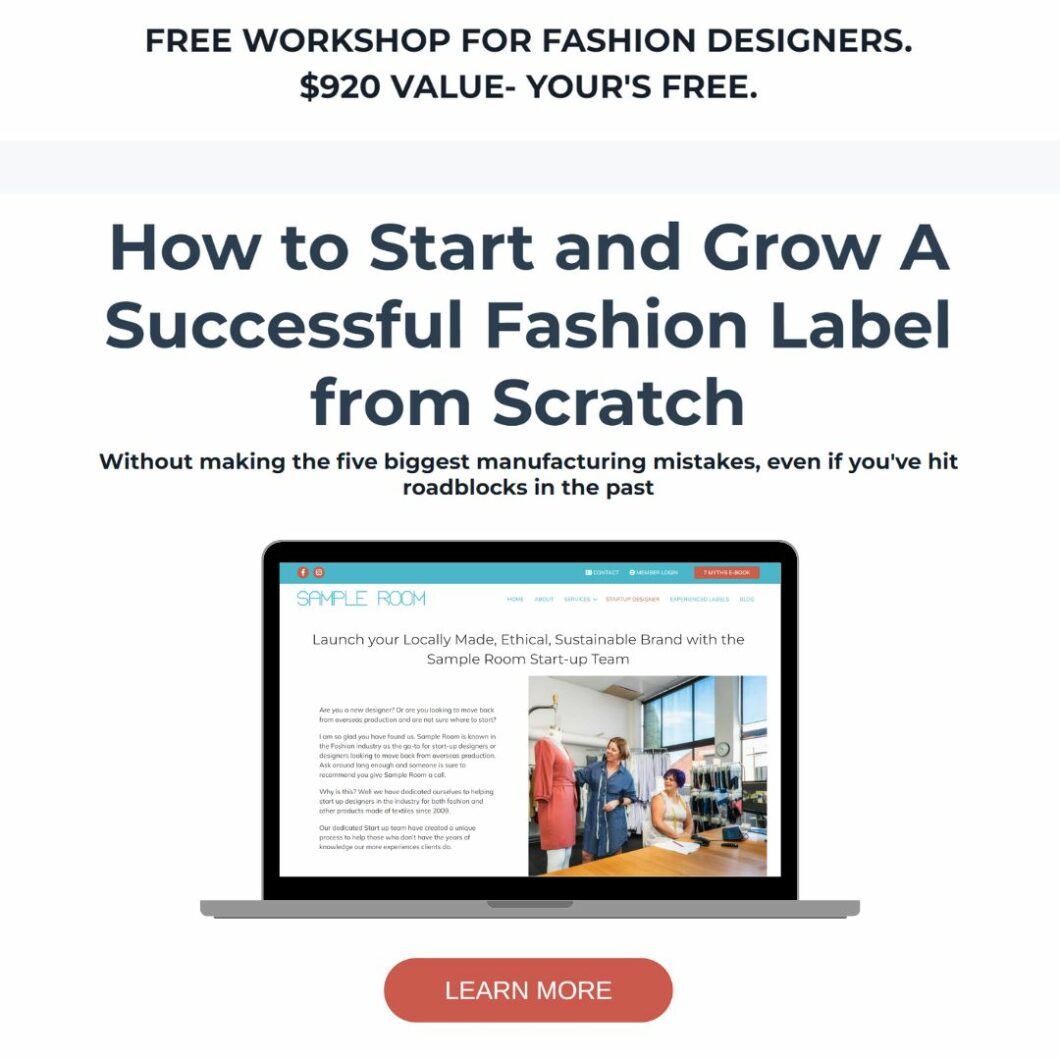Timing in the Fashion Industry: Managing Production Timelines

Today, let’s talk about timing in the fashion industry. It’s that time of year when many people start dreaming of summer and want to design a summer range for their labels. However, often they realize it’s too late to move their production back from offshore and have it ready for the season. So, today, I want to discuss the importance of timing, the differences between offshore and local production timelines, and what you can do to meet your desired deadlines.
The Role of the Designer
When it comes to managing timelines in fashion, the biggest factor is you, the designer. Your role goes beyond just designing; you also need to handle production management. The development process and reaching the desired timeline rely heavily on your sense of urgency and understanding of the process. This is something we often notice as a key difference between established designers and those who are new or emerging.
Offshore vs. Local Timelines
In terms of timelines, there isn’t a significant difference between offshore and local production. However, there are some factors to consider when going offshore. The crucial difference is that when you choose offshore production, you commit to a production run with a specific end date. This means all decisions and actions are driven towards meeting that deadline.
Limited Choices and Quick Decisions
One advantage of offshore production is that when you commit to a deadline, you have limited choices. For instance, you may receive one or two fabric swatches to choose between. Unlike local production, you don’t have the luxury of sourcing fabrics and sampling them. The process is streamlined to ensure quicker decision-making. Furthermore, every sample is expected to be approved without significant tweaking or changes, as they can impact the timeline.
The Hot Potato Effect
Managing offshore production can sometimes feel like playing a game of hot potato. The responsibility to meet the timeline is initially in your hands. You receive the samples, and it’s up to you to ensure timely approvals and responses. Once you send your questions or alterations back, the pressure shifts to the offshore production team. Both parties try to avoid being the ones to delay the timeline.
Managing Local Production
When it comes to local production, the development process is split into different stages. This means you have more control over the timeline but also more responsibility. At each stage, there may be delays due to waiting for information, payment, or fabrics. Understanding the micro tasks involved between each deadline is crucial.
The Development Process
In our business, we split the local development process into several stages:
- Design Brief Document: This is where you provide your ideas and requirements for your collection.
- Pattern and First Sample: The patterns are created, and the first sample is made based on your design.
- Alteration and Second Sample: This stage involves making alterations to the first sample based on your feedback.
- Grading and Production Preparation: Grading is the process of creating different sizes for your garment, and production preparations ensure everything is ready for manufacturing.
- Production: This is where the garments are produced based on the approved samples and patterns.
Timeframes and Expectations
While it’s possible to complete the full development process in three months, the average timeframe in our business is around six months. Of course, this can vary depending on factors such as the complexity of the collection and external factors that may impact the timeline. For first-time ranges, it may take even longer, sometimes a couple of years, as life can get in the way.
In Conclusion
Timing plays a crucial role in the fashion industry, regardless of whether you choose offshore or local production. As a designer and production manager, it’s essential to understand the process and have a sense of urgency to meet your desired deadlines. While offshore production offers limited choices and quicker decision-making, local production allows for more control but also places more responsibility on your shoulders. By managing the development process effectively and understanding the micro tasks between each deadline, you can successfully navigate the fashion industry’s timelines.

Are you looking to start and grow a successful fashion label from scratch? Register for my free workshop for fashion designers where I help you understand the steps to starting your own clothing label.
What’s included:
- The 5 Reasons why NOW is the BEST time to Create a Locally Made product
- The 7 Different business models of product launch growth. We’ll show you how you can start ASAP on a low budget
- The 6 Biggest Mistakes to Avoid When Manufacturing Locally
- The Essential 6 steps to developing and manufacturing your label from Scratch (missing even ONE of these can put you on your back foot)
- Discover YOUR Fashion Business Super Power
- How to Market Your Unique Label
- How to find the IDEAL Customers who will LOVE your design and Get Quick Feedback on Your Idea
- The Fashion Business Success Blueprint to Successful Fashion Label Development and Manufacturing (this is EVERYTHING you need to know)
- How We Can Help you Create Your Label
- Dozens of Examples of Labels that are Thriving (and what they did to succeed)
Book your seat for the ‘Start Your Fashion Business’ Workshop which is valued at $920 but FREE today. It’s not too late. Sign up today and watch the recordings over the weekend.
https://sample-room.mykajabi.com/SYFBW_Signup